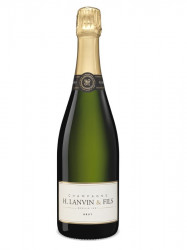Everyone likes the tickle of spritz on their nose, but how bubbly should your, er, bubbly be?
Champagne; one of the most revered drinks produced exclusively in one of the most revered regions of France. But it is the very thing that makes Champagne, well, Champagne, that also makes it possible for this region to even produce a drinkable wine - the bubbles.
One of the most northernmost wine producing regions in Europe, the cool temperatures mean the fruit never quite reaches full ripeness, resulting in a tart, acidic, still wine that many find unpalatable. Then in the 18th Century, a Benedictine monk named Dom Perignon (sound familiar?) invented a double fermentation process called Methode Champenoise. The wine was fermented once in the barrel, but then again in the bottle where carbon dioxide was captured, resulting in the dry yet beautifully bubbly drink we've come to love today.
It is said there are 49 million bubbles in a bottle of champagne, and this could well be true. Over the years, production methods have standardised the pressure in each bottle at around six atmospheres, (about twice the pressure of an SUV tyre) meaning the amount of fizz, or mousse, we can expect is pretty much the same across the board. This hasn't always been the case, though. Through much of the 19th Century, wealthy champagne lovers enjoyed crémant; produced entirely from white grapes the resulting effervescence was of a different character and, therefore benefited from a much lighter mousse than we are used to today. If those wines were bottled at the same pressure as modern champagne, it would result in far too much fizz.
Most modern champagnes now include a blend of red grapes, such as pinot noir. This results in a naturally lower level of fizz at higher pressure. Some champagne houses, such as Mumm, still make 'crémant style' champagnes from heritage white grape vines. These are usually bottled at around four atmospheres. Champagnes made from young fruit can also benefit from less fizz, giving a perception of greater texture on the palate. Full body wines will also be more enjoyable with less aggressive effervescence, and you can expect older champagnes to naturally have more gentle bubbles, as encouraged by the ageing process.
So, how bubbly should your champagne be? Good quality champagne, when poured, will result in a quick formation of froth with bubbles of about one millimetre in diameter. These will initially take up the top two centimetres of the glass, but will calm down after a few seconds as poured champagne loses its CO2 very quickly. Champagne is a graceful and subtle wine, and with the first sip you should experience gentle florals that are not overpowered by bubbles. Champagne should fizz on the end of your nose, but not go up it! The bubbles should be playful on your tongue but quickly give way to allow you to experience the flavour.
How bubbly you like your fizz is very much about personal taste, and will probably change depending on the sweetness of the wine, the type of grapes used in the blend or even the occasion you are drinking on; so why not play around with a few different types to find your favourite.





